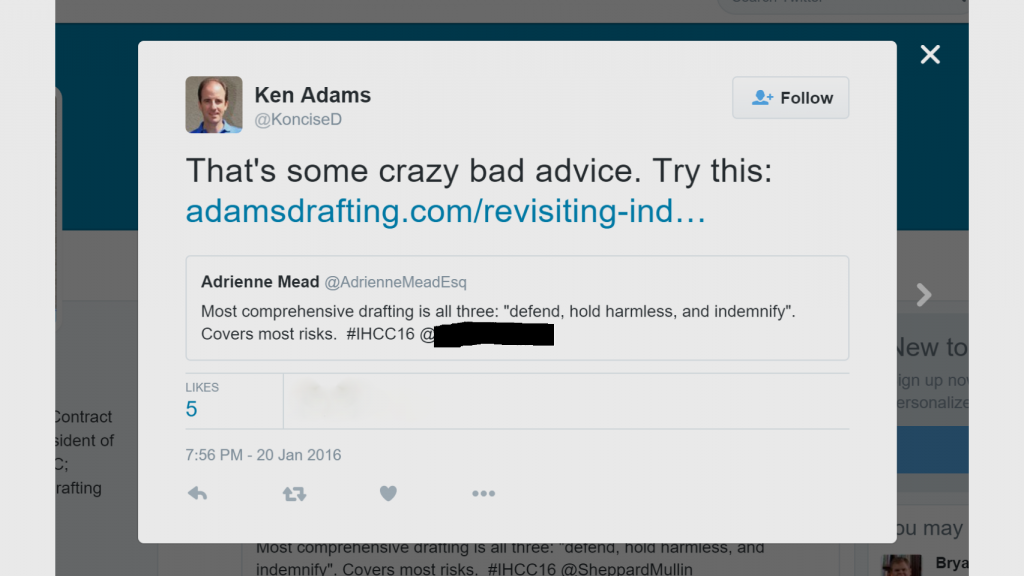Last night I did the following retweet of a live tweet from a conference:
 My intent isn’t to embarrass anyone—hence my amateurish redacting of the name of the law firm that offered this advice. Instead, it gives me an opportunity to make the following points:
My intent isn’t to embarrass anyone—hence my amateurish redacting of the name of the law firm that offered this advice. Instead, it gives me an opportunity to make the following points:
- There’s beaucoup misinformation out there. Indeed, what’s in the tweet is what passes for conventional wisdom in much of the transactional world. So be careful out there. Treat what you hear as a starting point for your own inquiries, unless you think your source is enough of a specialist that you’re willing to make the leap of faith it takes to rely on them. (That’s something I discuss in this post.)
- Regarding the advice offered in the tweet, go here for my most recent online summary; if you’re a glutton for punishment, go here for all my posts about indemnification. We’re not dealing with right and wrong. Instead, the question is what results in clear contracts that avoid unnecessary risk. When it comes to indemnification, the verb isn’t where the action is. Using indemnify by itself works fine; the real question is what you’re indemnifying against. Out-of-pocket expenses? Future liabilities? Just nonparty claims? Claims between the parties? And so on. Address those issues explicitly. It would be reckless instead to hope that your notions of what the arrangement should be could somehow be deduced from what verb you use. In particular, defend doesn’t begin to address indemnification procedures; see this post for more about that.
- Why point out this sort of thing? Because an efficient marketplace of ideas requires that you not only promote your own ideas but also point out shortcomings in the other guy’s ideas. On this blog, I try to do so politely, taking into account the informal style of blogs generally and this blog in particular. And taking into account that some of the stuff I see is so ridiculous that you have to laugh. On Twitter, I feel free to be more swashbuckling.
If you think I’m wrong about this or anything else, I’d love to hear about it.

>>>And taking into account that some of the stuff I see is so ridiculous that you have to laugh.<<<
Ah, that would include The Burkean Pentad used to justify legal jargon!
Ken, your fans might welcome your thoughts about a strategy some lawyers use in drafting and negotiating some kinds of agreements: deliberately omitting an indemnification provision if the indemnity one’s client wants is what the law would provide anyhow if the agreement says nothing. For example, one might omit an indemnification provision if the remedies one gets for its counterparty’s breach of contract are sufficient to protect the business interests one cares about. What do you think?